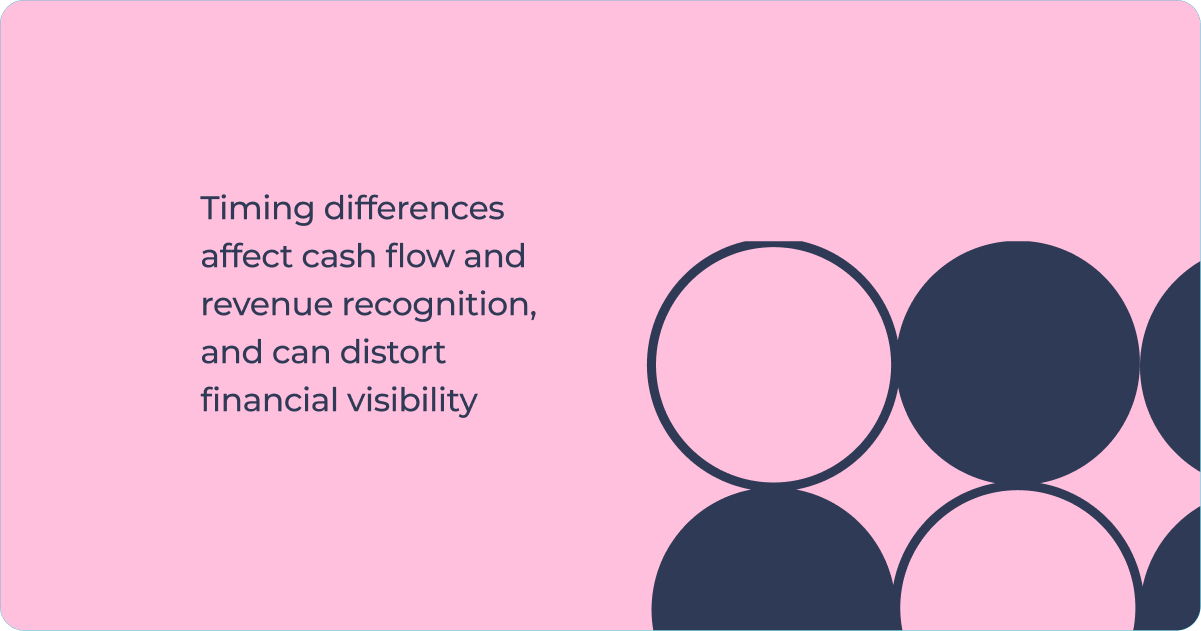(This blog was updated in October 2025.)
The popularity of usage-based pricing is the norm in SaaS. According to 2023 industry research, nearly 60% all SaaS companies now include usage-based elements in their pricing models.
For customers, the appeal is clear: they pay only for what they use, rather than a flat fee. For providers, usage-based pricing opens doors to new markets, fairer value alignment, and better growth predictability. Yet, for all its benefits, many SaaS businesses find that billing becomes the stumbling block.
Those who started small often rely on simple invoicing tools that weren’t built for recurring or consumption-based models. Established software vendors transitioning from license-based sales to true SaaS often find that their billing systems lag a generation behind.
The result? A patchwork of spreadsheets, manual usage tracking, and delayed or inaccurate invoices. The result is often revenue leakage and administrative headaches.
To make usage-based pricing work, SaaS companies need more than traditional invoicing tools. They need an agile, automated SaaS billing platform that can capture data, rate it, and invoice it accurately (even at scale).
Here’s how to get started.
How to Start with Usage-Based Pricing and Billing
Transitioning to pay-per-use pricing doesn’t need to be overwhelming. The key is to start small, automate early, and grow confidently. In this blog, we’ll look at the key steps to implementing usage-based billing successfully. And how the right billing solution for SaaS can make all the difference.
1. Scaling for Success: Build for Gradual Growth
As the SaaS industry moves toward hybrid and consumption-based pricing, scalability becomes essential. A scalable system doesn’t just handle more customers, it handles complexity, from pricing variations to expanding data streams.
In practice, that means the ability to manage everything from simple unit prices (like “per seat” or “per API call”) to tiered or volume-based models, where prices shift as usage grows.
However, adopting usage-based pricing doesn’t mean you must switch everything overnight. It’s smarter to start small, introduce a few usage-based products or features, and expand as your organization becomes more experienced in managing them.
By phasing in usage-based elements, your billing and operations teams can refine processes, test data integrations, and learn to manage billing events at a comfortable pace. Once your workflows are proven, you can scale with confidence, backed by a flexible SaaS billing software foundation that grows with your needs.
2. Streamline Billing with Intelligent Automation
Usage-based billing brings opportunity, but also complexity. Each customer generates countless billing events—from logins and transactions to bandwidth and storage consumption. Without automation, collecting, pricing, and invoicing these events becomes unmanageable.
Automation is the backbone of modern SaaS billing management. The first step is automated collection of billing events, ensuring every measurable unit of service delivered is captured accurately.
The second is automated rating. This requires the software applying the correct price to each usage record, based on the customer’s plan or contract terms.
These two steps, often referred to as data mediation and rating, are crucial to prevent revenue leakage, billing disputes, and customer frustration.
Manual processing, on the other hand, invites errors and delays. Spreadsheets cannot scale to handle live data from multiple sources or adjust to dynamic contract terms. Companies that rely on manual billing typically see higher churn rates, slower cash flow, and frustrated finance teams.
A powerful SaaS billing platform integrates with your CRM, ERP, and product systems to automate these functions. It ensures that usage data flows directly into invoices.
Automation not only increases efficiency; it enhances customer trust by providing clear, itemized, and timely invoices that reflect actual use.
3. Harness Data for Growth with Agile Billing
In today’s fast-moving SaaS landscape, agility is everything. Agile billing allows your business to evolve its pricing, contracts, and offerings in response to customer behavior and market changes.
With a flexible SaaS billing platform, you can modify pricing models, update contract terms, or introduce new billing structures without rebuilding your system each time. This flexibility enables you to experiment with new go-to-market strategies with minimum friction. You can run experiments around freemium-to-paid transitions, tier upgrades, or bundled service offers without needing development work (to support billing).
The secret lies in integration and data management. A future-ready billing system should feature strong API connectivity and robust data processing capabilities, capable of handling multiple, complex data streams from different systems.
This foundation turns your billing environment into a data powerhouse and reduces future integration pain. Rich, accurate billing data reveals usage patterns, customer behavior, and profitability trends. These insights feed directly into RevOps and growth strategy, helping your business fine-tune product offerings and identify opportunities for upsell and retention.
In short, agile billing transforms billing from a back-office process into a strategic engine for growth.
4. Transitioning to Pay-Per-Use: Practical Steps for Success
Shifting to usage-based pricing requires a mindset of continuous optimization and technical readiness. Here are five key principles to ensure a smooth transition:
- Start small, scale strategically.
Introduce usage-based services gradually, refining your processes before expanding to full-scale operations. - Avoid manual workarounds.
Resist the temptation to manage subscriptions or usage tracking in Excel. Choose a billing solution for SaaS that automates these workflows. - Automate event collection and usage rating.
Ensure your system captures and prices every transaction automatically to prevent revenue leakage. - Prioritize flexibility in your platform.
Select a SaaS invoicing software or subscription management platform that can evolve as your business grows. - Leverage data for RevOps success.
Rich billing data provides real-time insight into customer behavior, product usage, and recurring revenue health. Use it as the foundation for better forecasting and decision-making.
5. Unlocking the Full Potential of Usage-Based Billing
Adopting usage-based pricing transforms how you deliver and measure value. You should not view it as a simple change to how you charge customers. It can drive customer satisfaction, operational efficiency, and sustainable growth.
By combining automation, scalability, and data-driven insights, a modern SaaS billing software allows you to focus on innovation and service quality rather than administrative tasks. It turns billing from a burden into a competitive advantage.
At Good Sign, we specialize in helping SaaS and IT service providers unlock this potential. Our billing solution for SaaS is designed for companies that want to move beyond static subscriptions.
We enable flexible pricing, accurate usage tracking, and seamless automation.
Whether you’re managing data center services, consulting offerings, or multi-tiered SaaS products, our cloud-based SaaS billing platform delivers the agility, accuracy, and transparency you need to scale confidently.
If your current system struggles to keep up with your recurring revenue needs—or if you simply want to explore what’s possible beyond traditional subscription billing—we’re ready to help.
Book a demo today, and see how Good Sign can transform your billing into a growth engine. We’ll take on your challenge — and prove that the new world of SaaS billing lies beyond just subscriptions.



%20Billing-%20Fix%20Your%20Data%20Mediation%20Issues-1.jpg)